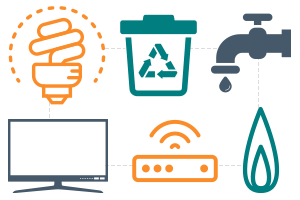Week 3
How to Move Kids & Pets, Transfer Utilities and Change Your Address
Share this:

Planning for Life in Your New Home
There are some parts of your life you can’t just box, tape and label — like children and pets, for example.
If you haven't already, now's the time to share the news with your kids and get them excited for the big change coming up. You'll also want to take a few extra steps to keep your pets happy during the move.
Besides these emotional aspects of moving, we'll need to take care of some business items like switching utilities and changing your address.
This week, we'll check all these little details off your to-do list.
Planning for Life in Your New Home
There are some parts of your life you can’t just box, tape and label — like children and pets, for example.
If you haven't already, now's the time to share the news with your kids and get them excited for the big change coming up. You'll also want to take a few extra steps to keep your pets happy during the move.
Besides these emotional aspects of moving, we'll need to take care of some business items like switching utilities and changing your address.
This week, we'll check all these little details off your to-do list.


































